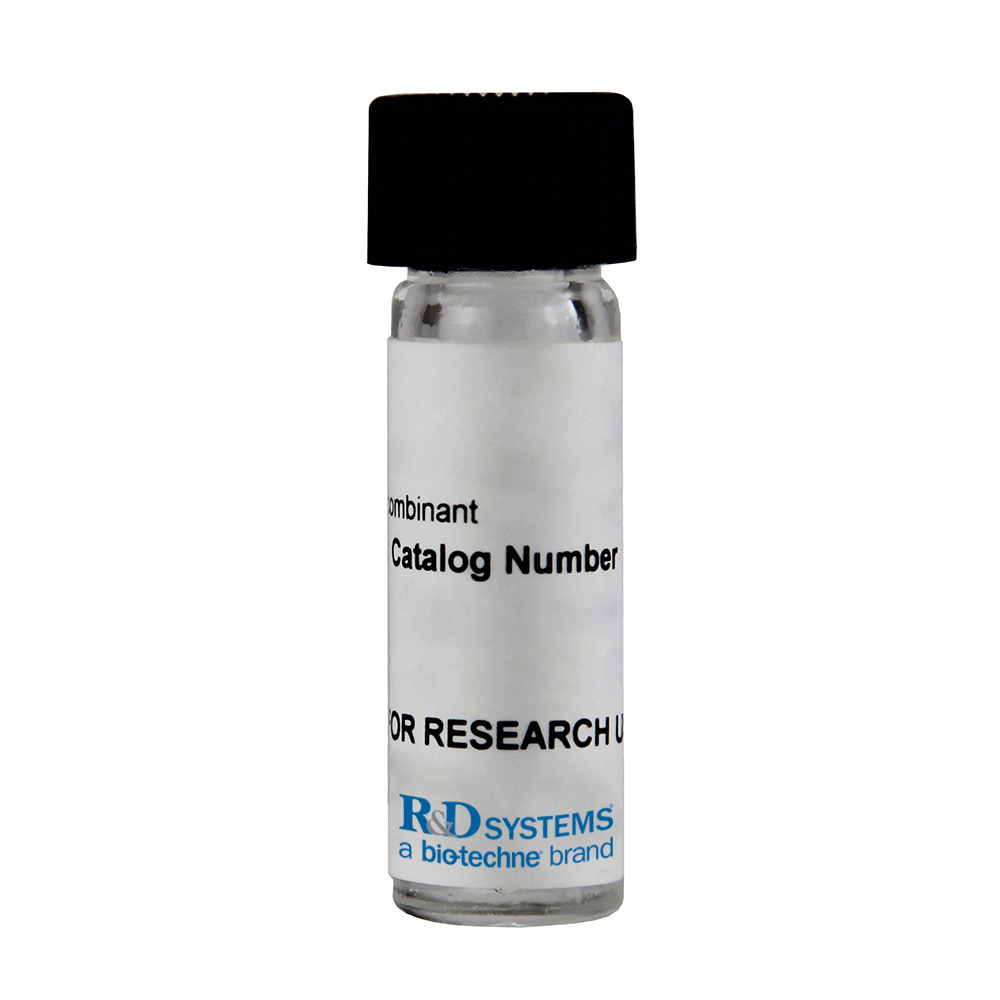 全部商品分类
全部商品分类

 下载产品说明书
下载产品说明书 下载SDS
下载SDS 用小程序,查商品更便捷
用小程序,查商品更便捷


 收藏
收藏
 对比
对比 咨询
咨询Carrier Free
CF stands for Carrier Free (CF). We typically add Bovine Serum Albumin (BSA) as a carrier protein to our recombinant proteins. Adding a carrier protein enhances protein stability, increases shelf-life, and allows the recombinant protein to be stored at a more dilute concentration. The carrier free version does not contain BSA.
In general, we advise purchasing the recombinant protein with BSA for use in cell or tissue culture, or as an ELISA standard. In contrast, the carrier free protein is recommended for applications, in which the presence of BSA could interfere.
8457-AS
| Formulation | Supplied as a 0.2 μm filtered solution in Tris and NaCl. |
| Shipping | The product is shipped with polar packs. Upon receipt, store it immediately at the temperature recommended below. |
| Stability & Storage: | Use a manual defrost freezer and avoid repeated freeze-thaw cycles.
|
Recombinant Human Pepsinogen A5/PGA5 Protein, CF Summary
Product Specifications
Ile16-Ala388, with C-terminal 6-His tag
Accession # P0DJD9
Analysis

Background: Pepsinogen A5/PGA5
Pepsins are aspartic proteases that are synthesized in the gastric mucosa and secreted into the stomach. They are released as zymogens called pepsinogens which are then converted to active pepsins by the acidic pH of gastric juices (1-3). PGA3, PGA4, and PGA5 are human Pepsinogen A isozymogens that differ in sequence by 24 amino acid (aa) residues (4, 5). This recombinant human Pepsinogen A corresponds to PGA5. Human Pepsinogen A isozymogens share approximately 56% aa sequence identity with mouse and rat Pepsinogen A isozymogens. Pepsins have optimal activity under conditions of acidic pH and are inhibited by pepstatin (6, 7). Pepsin A has broad substrate specificity, but preferentially cleaves peptide bonds involving aromatic and aliphatic amino acids.
- Athauda, S.B. et al. (1989) J. Biochem. 106:920.
- Kageyama, T. et al. (1989) J. Biochem. 105:15.
- Kageyama, T. (2002) Cell. Mol. Life Sci. 59:288.
- Zwiers, A. et al. (1994) Clin. Nephrol. 41:153.
- Nakai, H. et al. (1986) Cytogenet. Cell Genet. 43:215.
- Marciniszyn, J., Jr. et al. (1976) J. Biol. Chem. 251:7088.
- Kageyama, T. and K. Takahashi (1980) J. Biochem. 88:571.






